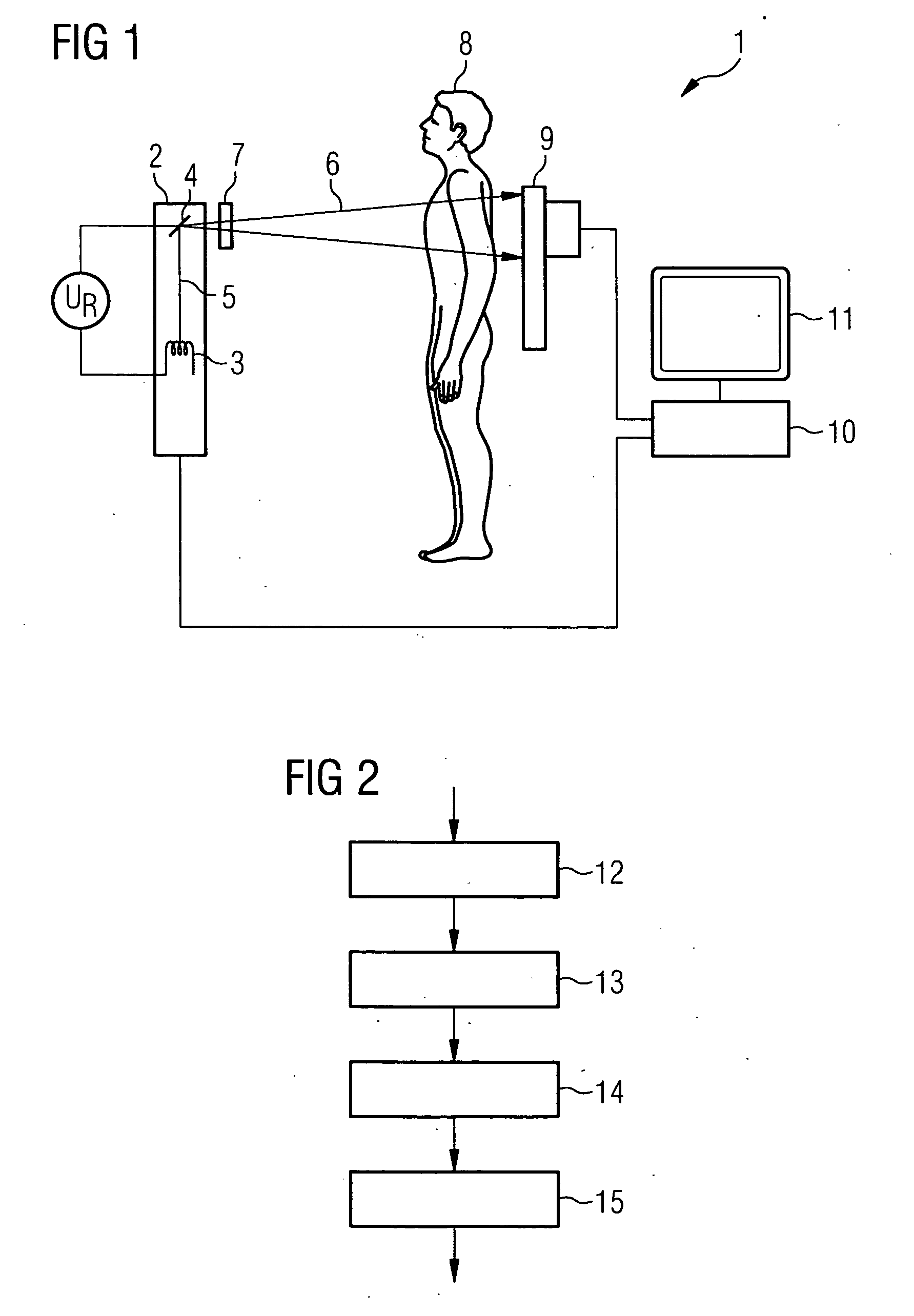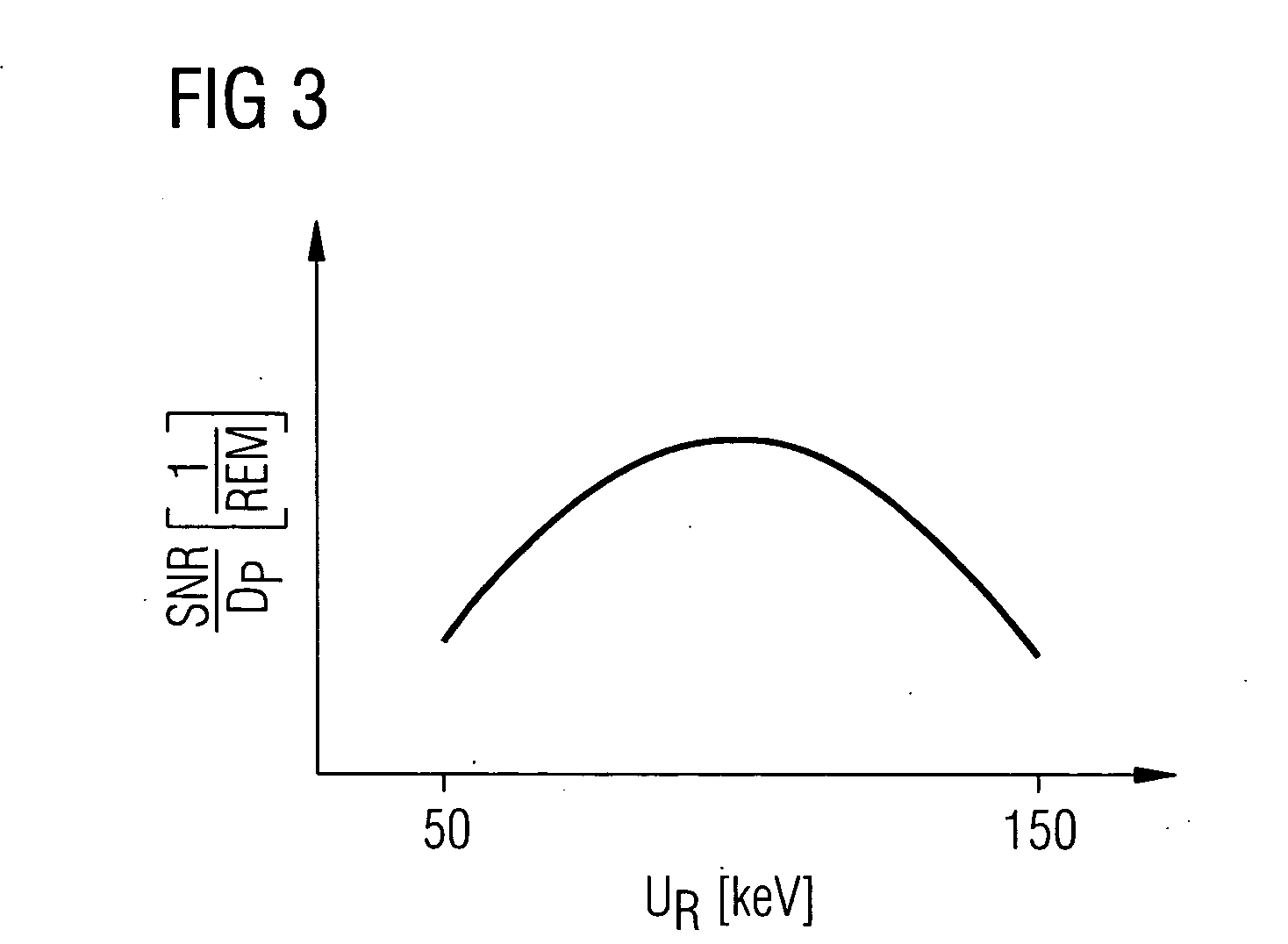Method for recording projection image
a projection image and recording method technology, applied in medical science, diagnostics, electrical equipment, etc., can solve the problem that the recording parameters cannot be optimized only poorly, and achieve the effect of minimizing exposur
- Summary
- Abstract
- Description
- Claims
- Application Information
AI Technical Summary
Benefits of technology
Problems solved by technology
Method used
Image
Examples
Embodiment Construction
[0018]FIG. 1 shows an x-ray system 1 with which x-ray recordings for dual x-ray absorptiometry can be produced. The x-ray system 1 includes an x-ray tube 2 having a cathode 3 for emitting electrons. The cathode 3 is as a rule formed from an incandescent filament through which a heater current IR flows. The electrons emitted by the cathode 3 are accelerated toward an anode 4 with the aid of a tube voltage UR. That produces an electron beam 5 that impinges on the anode 4 in a focused spot. The electrons retarded in the anode 4 produce x-radiation 6 which first passes through a preliminary filter 7 to suppress the low-energy component. The preliminary filters 7 are as a rule copper plates that can be interposed having different thickness into the beam path of the x-radiation 6. The x-radiation 6 then penetrates a patient 8 being examined.
[0019] The x-radiation 6 that has passed through the patient 8 impinges on an x-ray detector 9 that produces an absorption image of the patient 8, wi...
PUM
 Login to View More
Login to View More Abstract
Description
Claims
Application Information
 Login to View More
Login to View More - R&D
- Intellectual Property
- Life Sciences
- Materials
- Tech Scout
- Unparalleled Data Quality
- Higher Quality Content
- 60% Fewer Hallucinations
Browse by: Latest US Patents, China's latest patents, Technical Efficacy Thesaurus, Application Domain, Technology Topic, Popular Technical Reports.
© 2025 PatSnap. All rights reserved.Legal|Privacy policy|Modern Slavery Act Transparency Statement|Sitemap|About US| Contact US: help@patsnap.com



